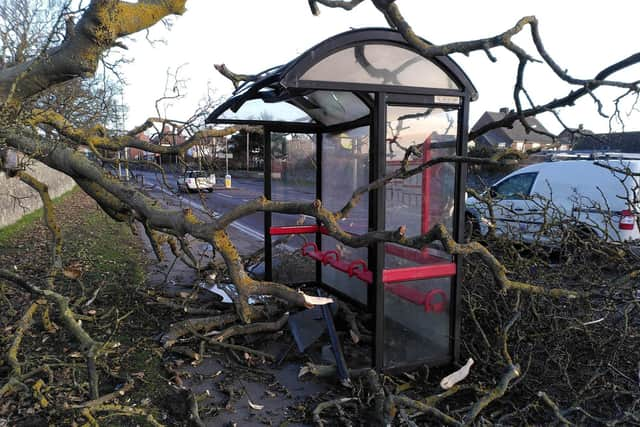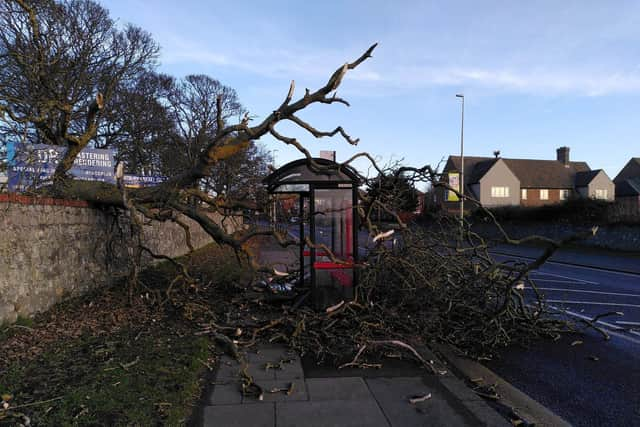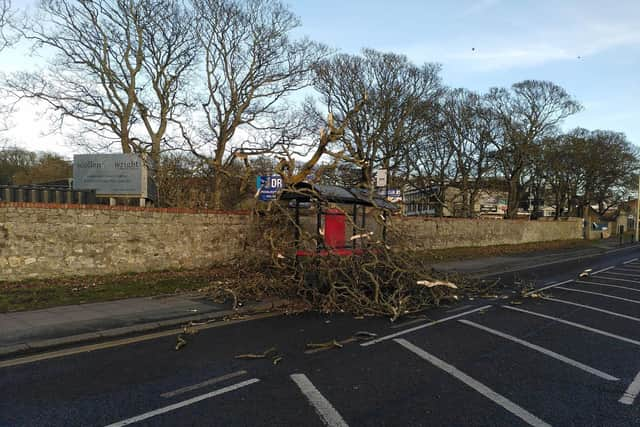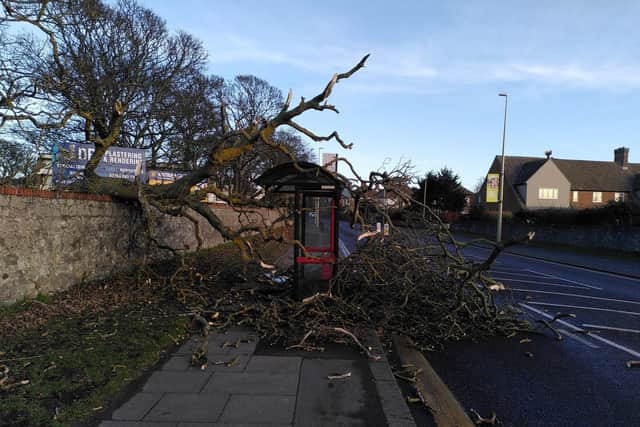Fallen trees and damaged buildings after Storm Otto batters Sunderland with winds of up to 80mph
and live on Freeview channel 276
The city avoided the brutal batterings of last winter’s storms, but Otto, which struck in the early hours of Friday, February 17, caused a headache across the city nonetheless.
Council teams were called out to deal with debris from downed trees and damage to buildings, while the waste and recycling centre at Pallion was closed as a precaution.
Advertisement
Hide AdAdvertisement
Hide AdA spokesperson for Sunderland City Council said: “We are currently responding to a number of reports of fallen trees and damage to properties as a result of Storm Otto.


“This has included just over a dozen callouts so far to deal with fallen trees and branches and a small number relating to damage to walls and fences.
“The council has two arboriculture teams responding to calls of fallen trees and branches, while building control officers are attending call outs to property damage.
“Wind conditions also led to the temporary closure of the Household Waste and Recycling Centre at Pallion this morning as a safety precaution. The site reopened at 1pm.”
Advertisement
Hide AdAdvertisement
Hide AdJust over the border, a tree blew down and demolished a bus shelter in Whitburn, leaving drivers dodging debris in Whitburn Bents Road on Friday morning.


There were also road closures in other parts of the North East, including the A1(M) in County Durham.
The Met Office had issued a yellow weather warning covering from 5am to 2pm on Friday, February 17.
Otto, the first storm to be named this winter, was labelled by the Danish Meteorological Institute.
Advertisement
Hide AdAdvertisement
Hide AdIt caused disruption across the North of England and Scotland.


Northern Powergrid released a statement this morning saying around 19,000 customers had been affected by power cuts, but it had reconnected 11,000 homes by lunchtime.
The forecast for South Tyneside is calmer for the coming days, though rain is forecast for Friday night and Saturday night, when rain is forecast to begin around 3pm and get heavier around 6pm.
Sunday is forecast to be cloudy but dry.
Maximum temperatures over the weekend are due to be around 10C, and not dipping below 7C.
Advertisement
Hide AdAdvertisement
Hide Ad

Named storms were first introduced in 2015 to aid the communication of approaching severe weather.